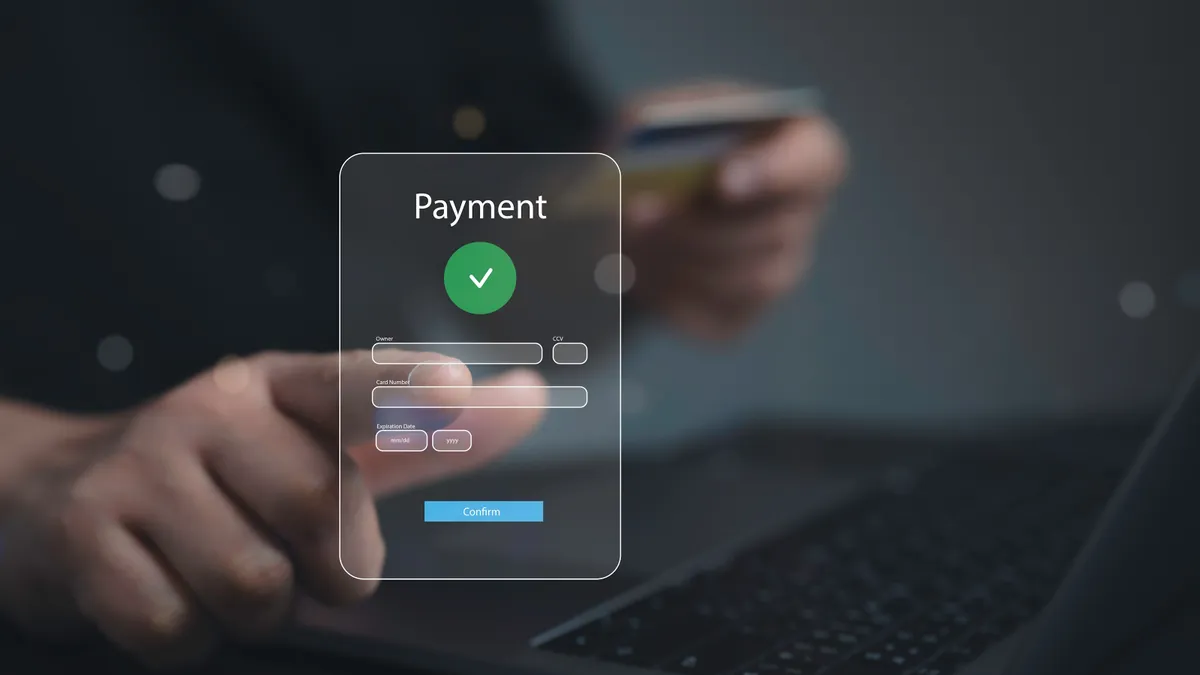If you are considering payments as part of your software platform, you will undoubtedly encounter the question of embedded or integrated payments. While this is an important consideration, Tyler Kattre, president of Wind River Payments, says that debate may cloud the real question that software providers and merchants should ask: What type of experience do they want to create for the customer?
"You want the payment to be a seamless experience," Kattre says. "There shouldn't be any disjointed flow or obstacle to completing the transaction." Wind River provides commerce tools for software providers, specializing in embedded payments solutions.
There are some nuances between embedded and integrated payments. But Kattre says that the distinctions are minor and often technical. Both embedded and integrated provide the ability to process payments without leaving a given software platform—delivering a seamless experience for the cardholder. Beyond that, different payment providers have various nuances, largely regarding how much responsibility the software provider is willing to assume. These often include things such as customer boarding, service and support, sales, marketing, and underwriting risk.
Regardless of the term used, Kattre favors payment solutions that create convenient transactions and payment providers that offer support and expertise designed to help companies thrive.
What are embedded payments?
Embedded payments are payments that are woven into the software, enabling users to conduct transactions without having to exit the platform or app. Many people may think of ridesharing or food delivery apps that allow you to pay for your purchase quickly as part of the experience. That increasingly common B2C experience and—fast-rising customer expectations—are driving the growth of embedded payments, which will reach $6.5 trillion in volume by 2025. However, seamless payments aren't only for consumer markets. Kattre notes that B2B companies are also leveraging embedded payments for the benefit and convenience of their customers.
The embedded payments difference
Embedded payments provide benefits to businesses and customers alike. Consider the following advantages:
- Seamless experience. Embedded payments create a convenient payment process without redirecting customers to another payment site or gateway. Customers can quickly input payment information, save card numbers and addresses to streamline the transaction time.
- Customized experience. Customize the payment experience to your brand and ensure that it's part of the customer experience, not in addition to it. You can provide options that meet your customer expectations regarding preferred payment methods and one-click features.
- Improved trust and security. Because the complete payment process occurs within your platform, customers who trust your company and brand will also trust the payment process. Embedded payment providers also offer advanced security features and PCI compliance, Kattre says.
- Enhanced flexibility. You can provide customers with multiple payment options and evolve those options with technology and market preferences.
- Improved customer loyalty. Embedded payments can make setting up recurring billing and subscription payment plans more manageable, which helps your software customers retain their customers.
Embedded payments challenges
Though embedded payments provide a range of benefits, they can also present challenges that may keep companies from pursuing them. For instance, designing and implementing embedded payments into a software platform can require developer time and company investment. "It's a new area of expertise and skills that your organization may not have," Kattre says.
Payment expertise is a specific specialty; even if companies have some internal expertise, it may not be anyone's full-time concern. Prioritizing the development of the experience as well as security, compliance, and more can end up falling to the bottom of already full to-do lists.
Kattre adds that understanding the spectrum of risk and reward that comes with incorporating payments is another challenge for software companies. In a revenue share model with a payments provider, taking on more risk can often mean you garner more revenue from each payment. "But software providers need to know what that means and how they'll manage it," he says.
Make embedded payments work
As Kattre previously noted, as you decide how to embed payments, you're looking for a seamless transaction experience for the end customer. In addition, Kattre notes that software companies should seek out payment providers that offer developer-focused packages that decrease the burden on development resources. "Those packages should also include all the tangential systems," he said. "Not just payments, but reporting, disputes, statements, and more."
There's no one-size-fits-all embedded payments solution—each company will have different risk tolerances, areas of expertise, comfort with payments, and goals for their business. "There is a lot of rigidity in the product offerings in the market," he says. "Vendors either want to help companies become payment facilitators independently, or they'll do it all for them. But it's more of a spectrum than one or the other."
Kattre advises that software companies find payment providers that want to help them grow their business over the long term. "We're talking about how a seamless payment experience gets provided, but that's step one," he says. "Then you want to know how the relationship with the payments provider will grow and evolve along the way."
Interested in learning more about embedded payments and how you can leverage them for your business? Connect with Wind River today.










